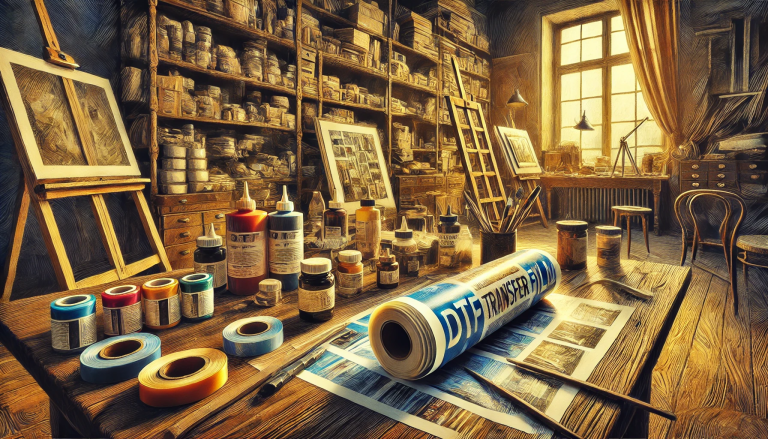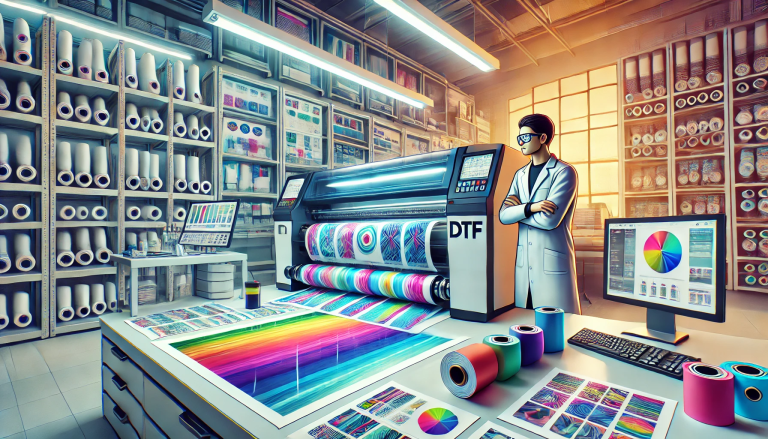“Exploring the World of UV DTF Film and Powder: A Comprehensive Insight” -MAXDTF- UV DTF transfer Film Supplier, UV DTF Film Manufacturer, Made in China
In the ever-evolving world of printing technology, manufacturers are constantly innovating to provide faster, more efficient, and versatile solutions for producing high-quality prints. One such innovation is the UV DTF (Direct-to-Film) printing process, which combines the benefits of UV-curable ink and DTF film technology. This article delves into the world of UV DTF film and powder, exploring their features, applications, benefits, and the role they play in modern printing.
What is UV DTF Printing?
UV DTF printing is an advanced printing method that merges the principles of traditional DTF printing with UV (ultraviolet) curing technology. This hybrid approach allows for the creation of high-quality prints on a wide range of substrates, including textiles, ceramics, and metals.
Key Components of UV DTF Printing
- UV DTF Film: This is a specialized transfer film coated with a layer that allows for efficient ink adhesion and transfer. Unlike conventional DTF films, UV DTF films are designed to work with UV-curable inks.
- UV-Curable Ink: These inks are formulated to cure (harden) when exposed to UV light. This process ensures quick drying and excellent print durability.
- UV Curing Machine: A UV lamp or curing machine is used to instantly cure the ink after printing, making the process faster and more efficient.
- DTF Powder: DTF powder, also known as hot melt powder, is applied to the back of the printed UV DTF film before heat pressing to enhance adhesion to the substrate.
How Does UV DTF Printing Work?
UV DTF printing is a multi-step process that involves combining the precision of UV-curable ink with the versatility of DTF technology. Here’s a step-by-step breakdown of the process:
- Design Preparation: Create or edit your design using graphic design software. Ensure the resolution is high (300 DPI or higher) for the best results.
- Inkjet Printing: Print the design onto the UV DTF film using a compatible inkjet printer equipped with UV-curable ink.
- UV Curing: Immediately after printing, expose the printed film to UV light using a curing machine. This step cures the ink, hardening it and ensuring it adheres to the film.
- Powder Application: Apply a layer of DTF hot melt powder to the back of the cured UV DTF film. This powder enhances adhesion during the transfer process.
- Heat Pressing: Position the UV DTF film onto the substrate and apply heat and pressure using a heat press. The powder melts, bonding the design to the substrate.
- Finishing: Once the transfer is complete, remove any excess powder and allow the substrate to cool.
Features and Benefits of UV DTF Film and Powder
1. UV DTF Film
- High Precision: UV DTF films are designed for high-quality inkjet printing, allowing for detailed and vibrant designs.
- Quick Curing: The use of UV-curable ink ensures that prints dry almost instantly, reducing production time.
- Durability: Prints made with UV DTF films are highly durable and resistant to fading, making them ideal for long-term use.
- Versatility: UV DTF films can be used on a wide range of substrates, including textiles, ceramics, and metals.
- Eco-Friendly: UV-curable inks and films are often more environmentally friendly than traditional solvent-based inks.
2. DTF Powder (Hot Melt Powder)
- Enhanced Adhesion: The DTF powder creates a strong bond between the UV DTF film and the substrate, ensuring durable transfers.
- Easy Application: Powder application is quick and straightforward, requiring minimal skill and effort.
- Versatility: DTF powder is compatible with a variety of substrates, making it a versatile addition to the UV DTF process.
- Affordability: DTF powder is cost-effective, making it an appealing option for high-volume production.
- Reusability: Excess powder can often be collected and reused, reducing waste.
Applications of UV DTF Film and Powder
The versatility of UV DTF film and powder makes them suitable for a wide range of applications:
1. Textile Printing
- Apparel: UV DTF printing is ideal for creating custom designs on T-shirts, hoodies, caps, and other clothing items.
- Home Textiles: Prints on curtains, pillowcases, and tablecloths benefit from the durability of UV DTF technology.
- Sports Wear: High-performance fabrics used in sports apparel can be customized with long-lasting UV DTF prints.
2. Promotional Items
- Bags and Totes: UV DTF prints can be applied to canvas bags, eco-friendly totes, and promotional bags.
- Drinkware: Custom designs on mugs, water bottles, and thermoses are made possible with UV DTF technology.
- Stationery: Notebooks, folders, and pens can be printed with intricate designs using UV DTF films.
3. Industrial Applications
- Automotive Interiors: UV DTF prints can be used to customize car seats, dashboards, and other automotive textiles.
- Protective Gear: High-quality prints on safety vests, gloves, and helmets are made possible with UV DTF technology.
- Outdoor Gear: UV DTF prints can withstand outdoor conditions, making them suitable for tents, backpacks, and camping gear.
4. Custom Gifts
- Personalized Gifts: UV DTF printing allows for the creation of unique, personalized gifts, such as photo frames, keychains, and phone cases.
- Corporate Gifts: Companies can use UV DTF technology to produce branded merchandise for employees and clients.
Advantages of UV DTF Printing Over Traditional DTF Printing
- Faster Production: UV curing significantly reduces drying time, enabling faster production cycles.
- Higher Quality: UV-curable inks produce vibrant, high-resolution prints that are resistant to fading and abrasion.
- Eco-Friendly: UV DTF printing is more environmentally friendly, as it uses fewer solvents and volatile organic compounds (VOCs).
- Cost Efficiency: The quick curing process and reusability of DTF powder reduce costs and waste.
- Versatility: UV DTF technology can be applied to a wider range of substrates compared to traditional DTF printing.
Challenges and Considerations
While UV DTF printing offers numerous benefits, there are some challenges and considerations to keep in mind:
- Initial Investment: UV DTF printers, curing machines, and specialized films can be expensive, requiring a significant upfront investment.
- Skill Requirements: Operating UV DTF equipment requires knowledge of UV curing processes and proper powder application techniques.
- Maintenance: Regular maintenance of UV lamps and printers is essential to ensure consistent performance.
- Powder Safety: Proper handling and disposal of DTF powder are necessary to avoid inhalation and environmental contamination.
Conclusion
The combination of UV DTF film and DTF powder represents a significant advancement in printing technology, offering a versatile, high-quality, and eco-friendly solution for a wide range of applications. By leveraging the benefits of UV-curable ink and DTF transfer films, businesses and individuals can produce vibrant, durable prints on textiles, ceramics, metals, and more.
As the demand for customized and high-quality printed products continues to grow, UV DTF technology is poised to become a cornerstone of the printing industry. Its ability to combine speed, precision, and durability makes it an attractive option for both small-scale hobbyists and large-scale manufacturers. By understanding the features, benefits, and applications of UV DTF film and powder, you can unlock the full potential of this innovative printing solution and stay ahead in the competitive world of customized products.





